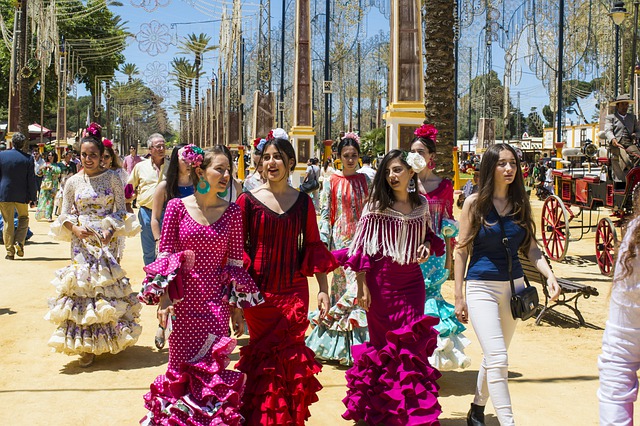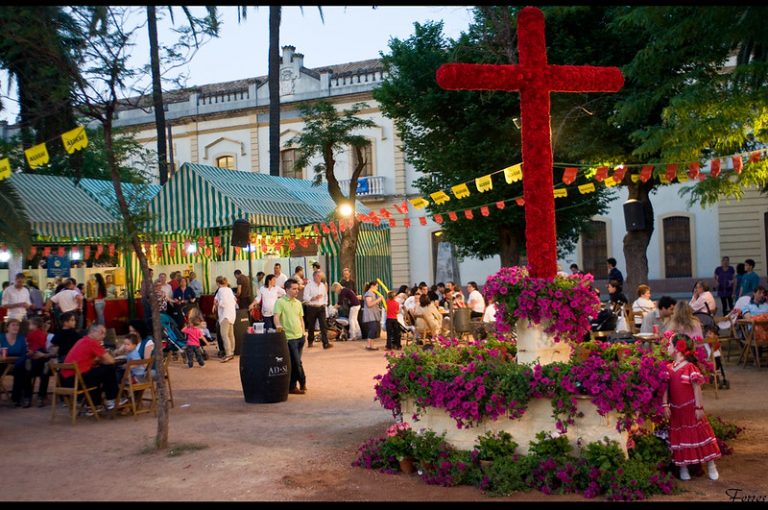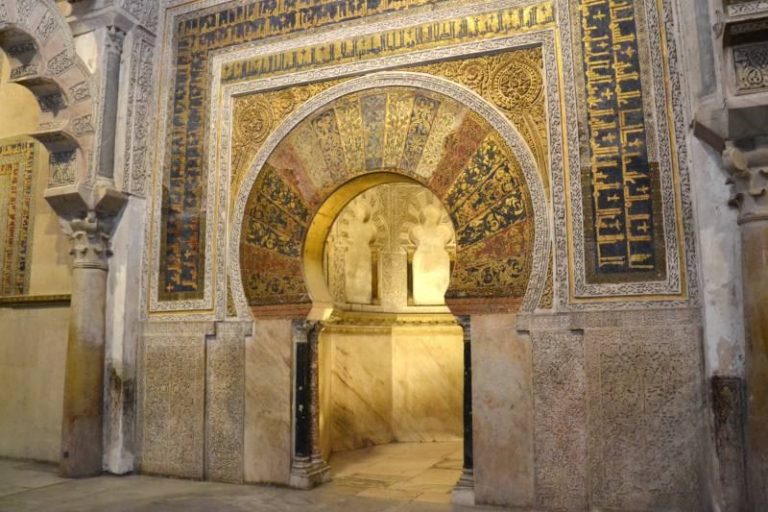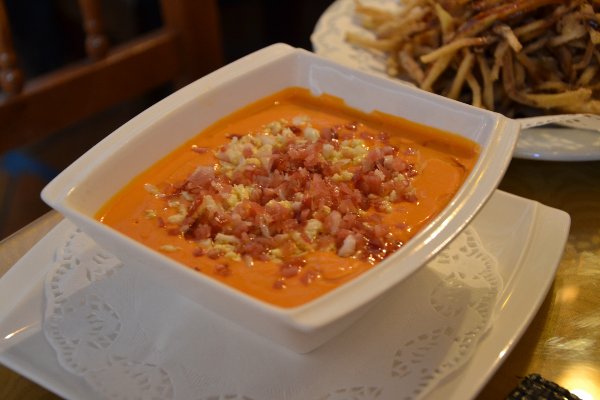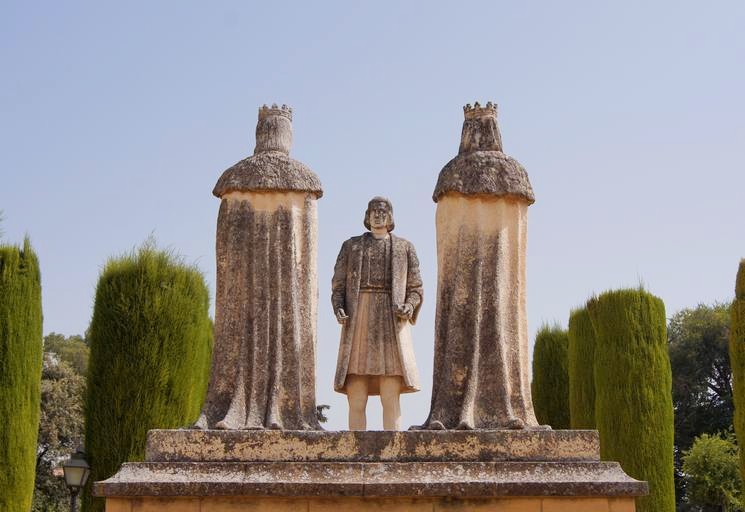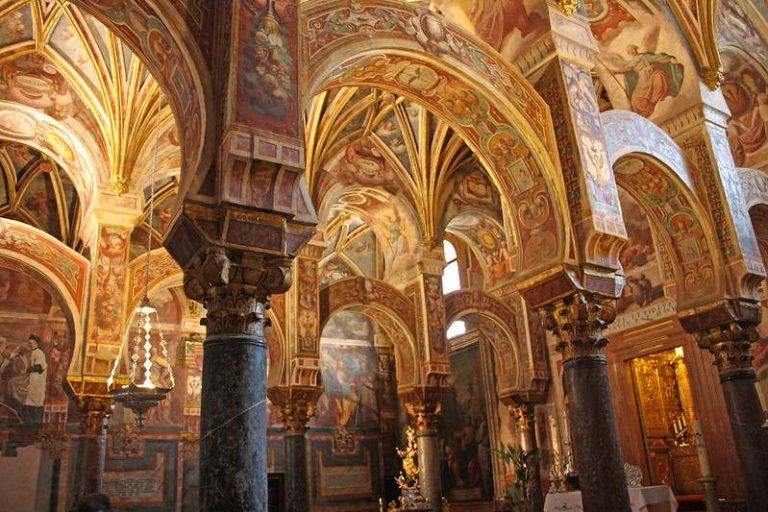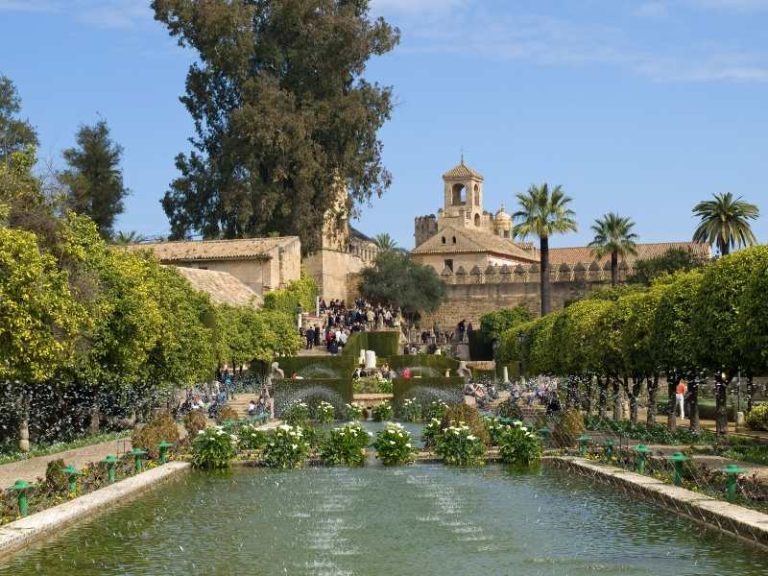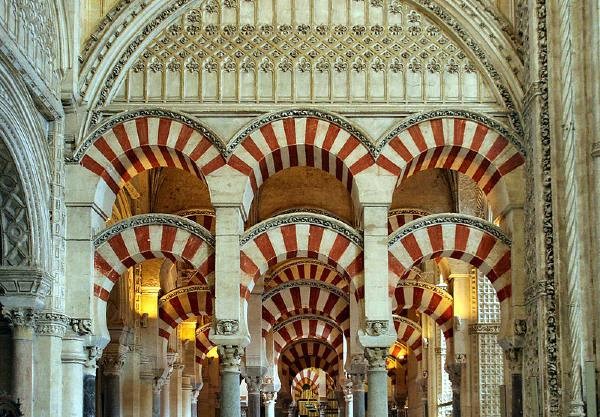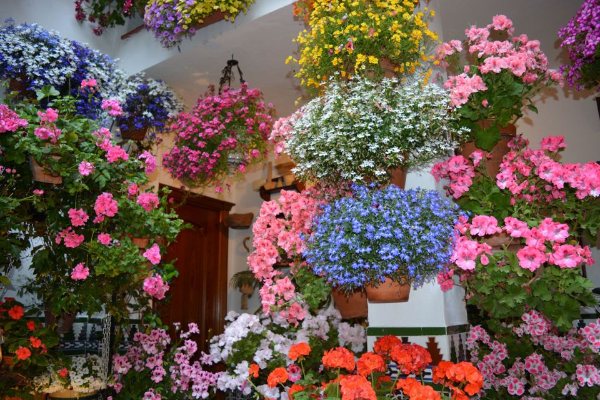Local Festivals in Cordoba
Between the twelve months of the year there is a very special one in Cordoba. Without a doubt, it is the month of May.
During this month, the most important local festivals take place in the city; locals wear their traditional costume; the streets are decorated; and a festive atmosphere permeates everything.
- Click on each of the local festivals below to learn more
The Festival of the May Crosses in Cordoba
(First weekend of May)
May begins with the Festival of the Crosses (the first weekend of May). The origin of this festival dates back several centuries when Christians decorated the crosses with flowers to celebrate the arrival of spring.
This festival is still a deeply rooted tradition in Cordoba. Throughout the city you will find impressive crosses made of beautiful flowers and decorated with manila shawls, candles, etc.
However, the religious significance of this festival has been replaced by music, dance, alcohol, and lots of fun. In fact, small pop-up bars are set up next to every cross where you can order a drink and dance.
At the end of the festival of crosses, the city council awards a prize to the best decorated cross.
- Where? The city center and Santa Marina, San Andrés, and San Basilio neighborhoods
- When Festival of Crosses takes place? The first weekend of May
- Schedule: from noon to 2am
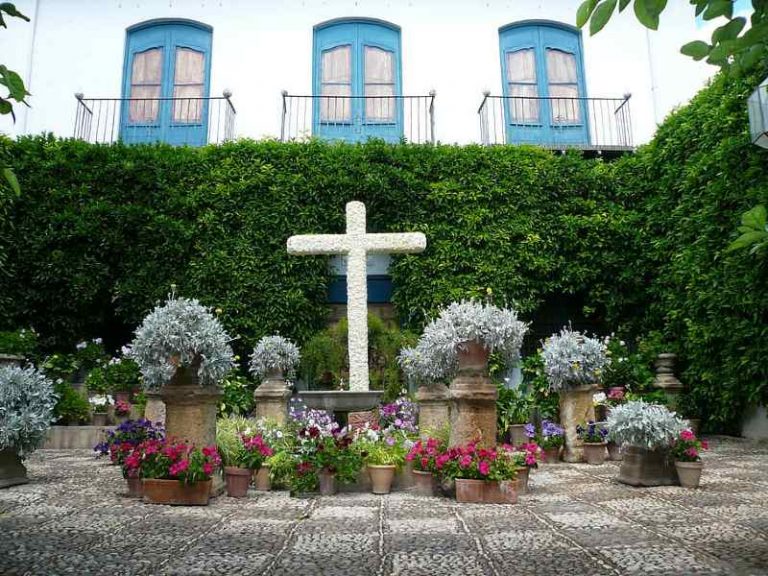
Patios Festival in Cordoba
(Throughout the month of May)
Another important celebration in May is the Festival of the Patios. Usually, traditional houses in the Jewish quarter of Cordoba have a courtyard (“patio” in Spanish) and a well, which neighbors use to collect rainwater. During centuries, these courtyards were the center of social life and provided opportunities for socializing.
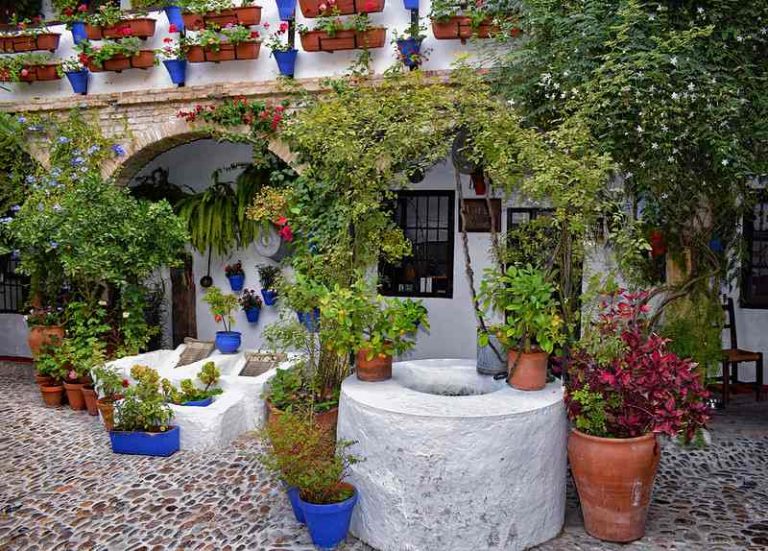
The way of life of local people has changed a lot in the last decades. However, these traditional courtyards continue to maintain their essence. Neighbors take great care of their courtyards throughout the year, and when spring arrives, the multitude of flowers that decorate the courtyards bloom and a sweet fragrance fills the Jewish quarter.
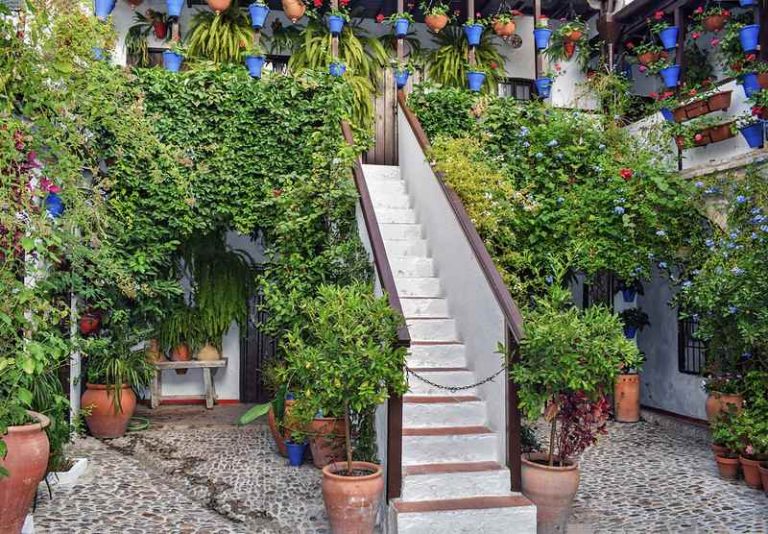
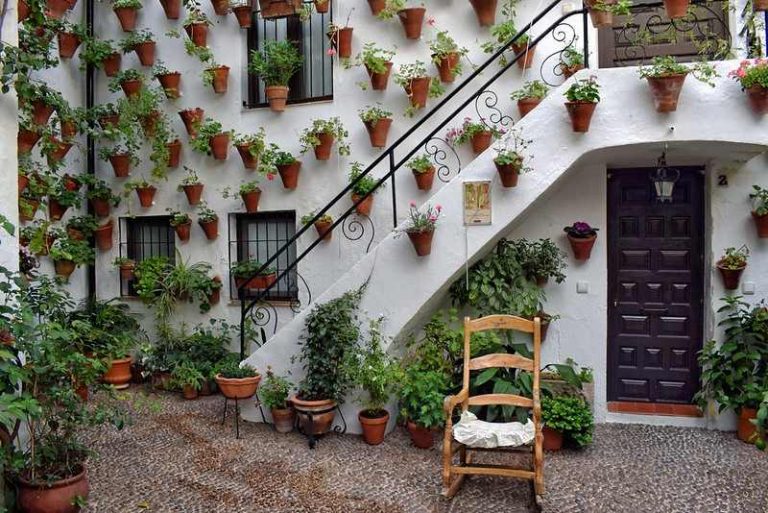
In 2012 this festival was included in the list of Intangible Heritage of Humanity of UNESCO. So, the festival of the Patios in Cordoba represents an important promotion for the city as it attracts numerous national and international tourists.
Where to find these traditional courtyards?
These traditional courtyards are dotted throughout the Jewish quarter. However, Alcazar Viejo district (very close to the Fortress of the Christian Monarchs) concentrates most of them. Santa Marina is another neighborhood where you will find courtyards to visit. Plus, Santa Marina also boasts some of the most beautiful churches in the city, such as the Church of Santa Marina and Chuch of San Agustín.
The Fair of Cordoba (Fair Our Lady of Health)
The month of May ends in Cordoba with the Cordoba Fair which commemorate the feast of Our Lady of La Salud (Health).
The Cordoba Fair is, undoubtedly, one of the most important festive events in Andalusia. City decks itself up for this festivity; women of all age dress in gorgeous traditional costumes, people dance, horse carriages fill the streets, churches are specially decorated, and the festive atmosphere is all around in Cordoba.
Officially, Cordoba Fair kicks off on the penultimate Friday of May at midnight with a lighting ceremony, which brings together thousands of people. This ceremony includes a firework show.
Approximately, each year more than 1.5 million people visit the Cordoba Fai, so this celebration has become one of the greatest tourist attractions in the city.
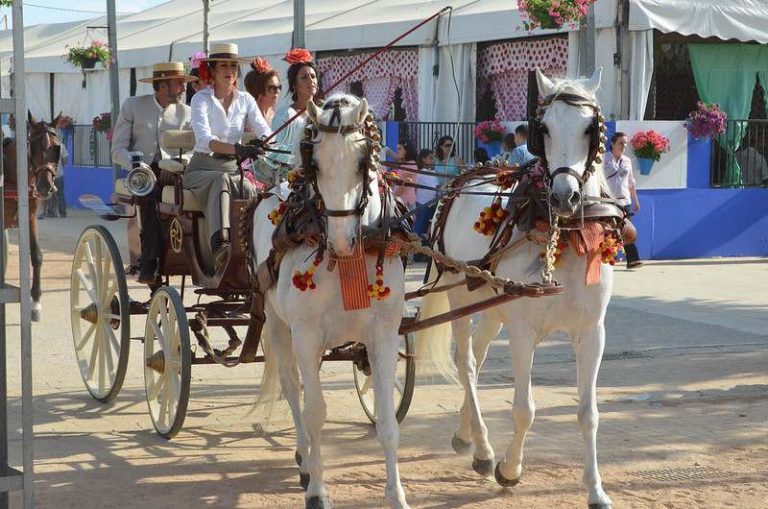
The fairground, popularly known as “El Arenal”, is located near the Guadalquivir River. Traditionally the fairground is divided into two areas:
-An amusement park where multitude of attractions are installed: Ferris wheel, bumper cars, roller coasters, raffles, etc.
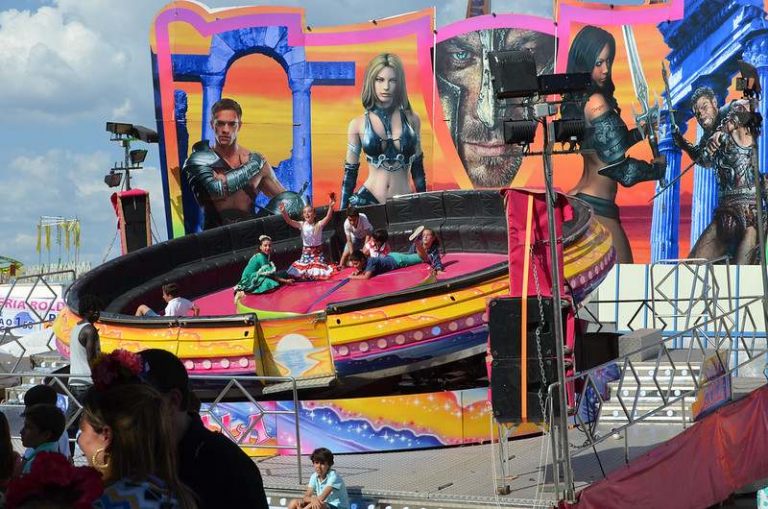
– “Casetas”: If this is your time in a local Fair in Andalusia, you may not know the meaning of this word. “Casetas” are tents where people party, dance “sevillanas”, eat tapas and drink traditional wine. Unlike the Seville Fair, in Cordoba the vast majority of “casetas” have free entry.

Parallel to the celebration in the fairground, bullfights are held during the last week of May (Los Califas Bullring). The best bullfighters in Spain gather in Cordoba and ticket prices skyrocket. Bullfighting is a deeply rooted tradition in southern Spain.
When Cordoba Fair takes place?
From the penultimate Friday of May at midnight until the last Sunday of May
Where is the Fairground?
El Arenal (Fairground) is located in the east of the city, on the banks of Guadalquivir River. We highly recommend using public transport to get to this part of the city. The incredible influx of visitors causes huge traffic jams and problems parking the car.
There are free municipal buses connecting the city center with the fairground. However, the most comfortable and effective option is to take a taxi. The price of a taxi from the city center to the fairground is approximately €10.
Holy Week in Cordoba
(Being a religious holiday, the date changes every year)
As in every Spanish city, Holy Week is lived with great devotion in Cordoba. Of course, the star of this festival are the religious processions.
Holy Week Processions in Cordoba
In Cordoba there are 38 “Hermandades” (Brotherhoods), each of which organizes a procession (“procesión” in Spanish). Processions are public ritual marches where heavy polychrome wooden sculptures that represent scenes of the Passion, Death and Resurrection of Jesus Christ are carried aloft by foot as a penance. At the same time, music bands and penitents with their faces covered (“Nazarenos”) take part in the procession.
Despite the large number of brotherhoods (38), each one has its own peculiar characteristics; some of them do not have musical accompaniment, the colors of their clothes are different, or the number of penitents varies. Belonging to one of these brotherhoods is a source of pride for its members. After a year of hard training, the feeling of camaraderie among the members is very intense. This feeling of belonging even passes from generation to generation. Of course, there is no shortage of rivalries between the different brotherhoods 🙂

The first processions take place on Palm Sunday and commemorate the entry of Jesus Christ into Jerusalem. However, the high point of this religious celebration is reached on Holy Thursday; this day remembers the Last Supper of Jesus Christ with the 12 disciples and the capture of him by a group of Roman soldiers.
On the dawn of Good Friday, the Hermandad de la Buena Muerte commemorates the death of Jesus Christ. The procession begins at the Church of San Hipolito, which was founded in the 14th century.
Because this procession commemorates the sad moment of the death of Jesus Christ, there is no musical accompaniment. Just imagine, the religious procession walking in absolute silence through the narrow streets of Cordoba at dawn, only illuminated by candles and lamps. Simply AMAZING!
At approximately 6am on Friday the procession arrives back at the church of San Hipolito and the parishioners and devotees go to have breakfast in the nearby bars.

Which is the best place in the city to enjoy Holy Week Processions in Cordoba?
Each procession has a different itinerary and schedule. For this reason, we recommend that you organize your days in Cordoba if you want to enjoy the most interesting processions.
The best tip we can give you is to get the official City Council brochure. In this brochure are indicated the schedules and itineraries of all the processions in the city. These brochures are free and can be found in hotels, tourist offices, bars and restaurants.
The best place to see the Holy Week Processions:
Despite each procession itinerary is different, there is one point that is passed by all of them: The Mosque-Cathedral of Cordoba. If you stand close to the Cathedral, you can see different processions. Also fair to say that there are a lot of people who want to do the same and there is no much free space, so sometimes it may convert to “Mission Impossible”.
Useful Vocabulary for Holy Week in Spain
Respect for tradition plays a huge role in the Holy Week in Andalusia. Of course, this respect is reflected in the vocabulary used during this religious ceremony.
Before attending a traditional Holy Week procession in Cordoba, you should learn subject-specific vocabulary, which will make you better understand this wonderful experience.
-Nazareno: Members of the procession (penitents) who are dressed in long tunics and “capirotes” (pointed hat of conical form). The color of the tunics depends on the brotherhood. These nazarenos also carry candles, incense burner or crosses and may walk barefoot.
-Paso: Heavy structures depicting a whole scene from the Bible. Pasos are beautifully decorated with flowers and candles.
-Costalero: People who are located under the platform of the “paso” (float). The number of costaleros varies depending on the size and weight of the paso. On average, a float weight more than 2.000 kilos (4,500 pounds)!!! To support the enormous weight of the float, costaleros wear a “costal” (white protective garment) on their heads.
-Capataz: He is responsible for directing the procession and gives instructions to the costaleros.
-Cruz de guía: It is the cross carried by a Nazarene located at the beginning of the procession.
-Incienso: Incese. It is undoubtedly the most characteristic smell of the Holy Week in Andalucia
-Levantá: It is the action of lifting the float thanks to the coordinated effort of the costaleros.
-Saeta: Short song with deep religious feeling sung from the balconies.
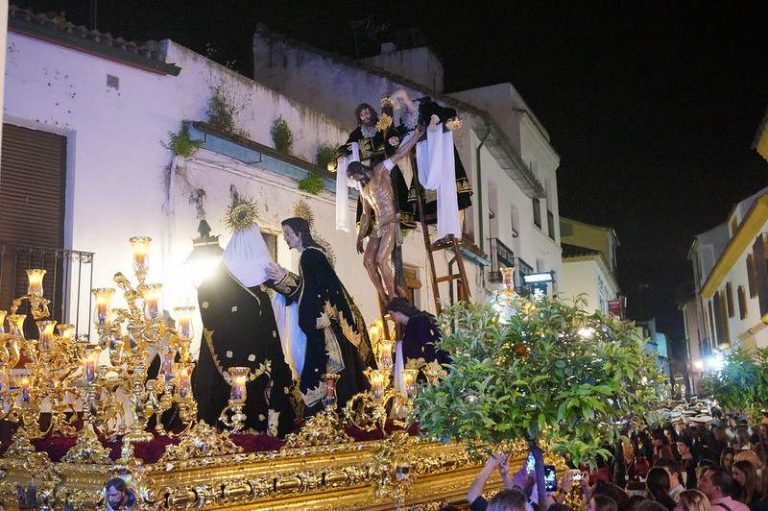
What to Eat in Holy Week in Cordoba
Of course, Holy Week in Cordoba has an important influence on the local cuisine. For example, according to Catholic tradition, on Good Friday it is not allowed to eat meat. Without a doubt this is a litmus test for the Spanish since we absolutely love meat 😀
Why is it not allowed to eat meat on Good Friday?
On Good Friday Christians commemorate the death of Jesus Christ. In other words, it is a day of spiritual recollection. In the past, meat was linked with feasts and celebrations. It is for this reason that the Catholic Church does not allow meat to be eaten on Good Friday; there is nothing to celebrate that day.
Traditional Foods to Try in Cordoba during Holy Week
Traditional Spanish cuisine uses simple and cheap ingredients. Besides, in the past humble people could not afford to waste any food. Therefore, our grandmothers used all their ingenuity to turn leftovers into a gasp-worthy meal.
The best example of this is torrijas; instead of throwing away stale bread, they made a delicious sweet. The consumption habits of the Spanish have changed a lot in the last decades. However, during Holy Week many of these forgotten dishes are brought back to life.

-Potaje: This is the most emblematic dish in Córdoba during Holy Week. It is a delicious stew made up of chickpeas, cod, and spinach.
-Buñuelos: This sweet consists of balls made with flour, water, and milk, and fried in plenty of oil. Once fried they can be filled with cream, covered with honey, or sprinkled with sugar.
-Pestiños: Dough made with flour, white wine, and sesame, and fried in olive oil. Once the pestiños are fried, they are covered with honey or sugar.
-Torrijas (Spanish “French Toast”): It is the most traditional sweet in Spain during Holy Week. You can find torrijas in any bakery in the country. It consists of a slice of bread, soaked in milk, battered in egg, and fried. Once fried, while warm, torrijas are sprinkled with sugar.

